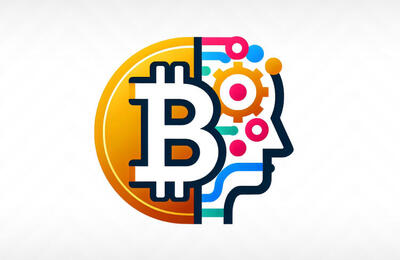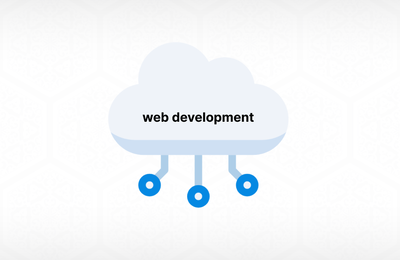
Technology has been one of the most important factors driving the evolution of human civilization throughout history, no matter the age or place.
Constant progress and the regular introduction of new developments (e.g., steam engines, radio and TV, planes, or even credit cards) into a wider ecosystem of applications and industries have had a massive impact on how we live today.
However, this process isn't finished — we are nowhere near exhausting our technological potential. On the contrary, we are currently witnessing a rapid acceleration of innovation and the creation of new technologies that are even more disruptive and groundbreaking than those preceding them.
To help you understand the importance of these developments, we've compiled a list of three emerging technologies that are changing the world even as we speak.
Read the article and discover what technologies will shape the world in the years to come!
Blockchain
If you are an avid follower of blockchain news, then you probably understand how groundbreaking this technology is. To those unaware, blockchain is a distributed database that stores the data about all digital transactions in a decentralized network of computers.
There are a few reasons why this technology is one of the bigger game-changers as of late. First, the data stored in a blockchain is immutable, meaning that it can't be altered or removed by anyone. In other words, users can treat blockchain as a «digital notary» and trust that the information stored in it is correct. Moreover, the use of blockchain is completely transparent and accessible to everyone — any member of the public can verify the data if they want to.
Although blockchain can work in the finance and banking industries, the technology is also used in other areas, such as healthcare, supply chains, and various government institutions. Of course, that list is far from exhaustive — blockchain is a relatively new tech, meaning that its potential hasn't been completely explored just yet.
3D Printing
While 'Star Trek' has been known to showcase many futuristic technologies to its audience, one particular innovation has been a huge inspiration for many real-world developers: replicators. Present in nearly every corner of the USS Enterprise, these machines could create any item that the ship's crew needed as long as they knew its precise chemical structure.
While replicators are still confined to the realm of sci-fi, 3D printing is the closest equivalent we have in 2023.
In simple terms, 3D printing is the process of turning digital models into real, three-dimensional objects by continuously extruding thin layers of special material on top of each other. After some time, the entire model is finished, and you are left with a physical object.
Thanks to the proliferation of affordable filament and resin 3D printers, this technology has the potential to completely change the way we get things.
To illustrate the point, the only factor limiting you is the tensile strength of the material you use. Do you want to decorate your room with the elves and dwarves you modeled in Blender? Or maybe there are a few buttons missing on your car's dashboard? The sky's the limit with 3D printing!
Of course, the applications of 3D printing go well beyond domestic use. The technology can be easily adapted to work with different materials and in various industrial settings. As such, 3D printing is becoming increasingly popular in the medical, automotive, as well as aerospace sectors.
What's more, both ESA and NASA are investigating ways to print habitats in such inhospitable environments as the Moon or Mars. Add to the fact that these tests focus on utilizing local resources (e.g., regolith), and we may be looking at the technology that will help us permanently settle the final frontier.
Genetic Engineering
Genetic engineering is the process of introducing changes to an organism's DNA to create new traits or characteristics. Although controversial to some, this technology has the potential to change the way we live in more ways than one. In fact, it is already doing it at a limited level.
GMO crops are one of the most commonly used applications of genetic engineering today. Thanks to this technology, we can enhance food sources in terms of their resistance to pests and diseases, as well as increase their shelf life.
As a result, more food can be produced at a lower cost and without a negative impact on the environment. By genetically modifying vegetation, it is possible to adapt the plants to different climates, making it easier to grow them in arid fields, for example.
The potential of genetic engineering is not limited to agriculture, though. Genetically modified bacteria that eat plastic might be the key to dealing with the ongoing waste crisis. The RIDL (Release of Insects carrying Dominant Lethals) strategy is sometimes used to control populations of disease-carrying bugs such as certain moths or flies.
However, the most promising application for this technology is reserved for human beings themselves.
Although techniques like CRISPR are still a novelty that needs to be further researched and refined, they could someday give us the ability to introduce changes to human DNA.
If we can use this technology without fear of causing mutations or developing hereditary disorders, we may be able to prevent some genetic conditions before birth and effectively treat a range of diseases, such as cancer or Alzheimer's.
Conclusion
The technologies mentioned above are not science fiction — they are real, and they are slowly but steadily getting adopted on a global basis. Of course, this is just the beginning, as the innovations mentioned above are still a long way from achieving their full potential.
However, we can already see some of the positive effects of these technologies, and there are many more to come. Blockchain, 3D printing, and genetic engineering already start to have a profound impact on factors such as food security, sustainability, and data safety.
If everything goes right, these technologies could even help us solve some of the world's more pressing issues in the near future!













